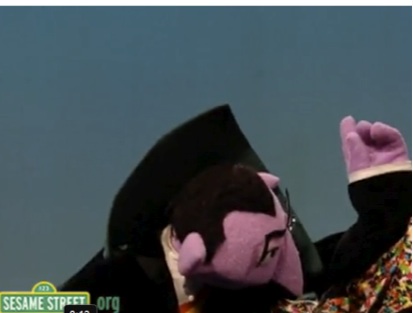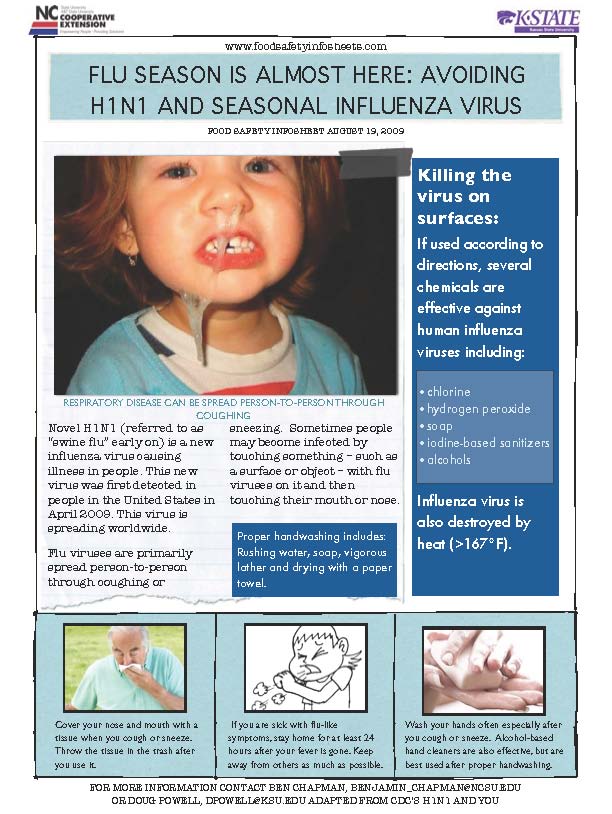Michéle Samarya-Timm, a registered environmental health specialist with the Somerset County Department of Health in New Jersey (represent) writes:
 The recent New Zealand study that most people are not properly containing their coughs and sneezes comes as no surprise, as I still see air sneezes wherever I go.
The recent New Zealand study that most people are not properly containing their coughs and sneezes comes as no surprise, as I still see air sneezes wherever I go.
Look around. Children have been taught – and are following — proper respiratory etiquette by covering their coughs and sneezes. It’s the adults we need to reach for disease prevention behavioral change. As we talk about doing the “Dracula sneeze” maybe its time to reach adults by tapping into our inner children and bring those of my generation back to what we learned when our role models had googley eyes, and skin of orange, purple or blue felt.
Close your eyes, and hum Sunny Day- Sweepin’ the clouds away…
And there we are with Count von Count – who should be the poster child for the “Dracula Sneeze.” Early on (circa 1971) we see him counting flowers – because flowers make one sneeze. Then we can count the sneezes (Ah-ha-ha-ha!). Unfortunately, Count doesn’t use his hands. Or his cape. Or anything to catch his sneezes. But he could be useful counting 20 seconds of handwashing… (20 *Wonderful* seconds!) http://www.youtube.com/watch?v=kQC82okzTXI
And sneezes can be contagious. Especially in groups. The Sneeze Song illustrated that – with cows, chickens and swine. Not a good prospect to think that the shopping mall, the train station or the barnyard could have a plethora of airborne diseases from indiscriminate sneezing. With an end message of “cover your coughs and sneezes” this clip could be a generation-catching public service announcement. http://www.youtube.com/watch?v=CgD27p9uJ0k
At least Ernie and Bert recognize sneezing etiquette. Ernie has been known to offer his handkerchief to Bert. It’s what friends do. (That, and put their  noses back on.) And remember, Ernie knows about personal cleanliness. After all, when we first met him in 1969 Ernie was scrubbing to get clean. http://www.youtube.com/watch?v=R6rWY-aGVe0 Ernie’s penchant for cleanliness brought us some great handwashing songs. Forget the ABC’s …singing “everybody wash” encourages all around you to join in with good, clean and considerate handwashing fun.
noses back on.) And remember, Ernie knows about personal cleanliness. After all, when we first met him in 1969 Ernie was scrubbing to get clean. http://www.youtube.com/watch?v=R6rWY-aGVe0 Ernie’s penchant for cleanliness brought us some great handwashing songs. Forget the ABC’s …singing “everybody wash” encourages all around you to join in with good, clean and considerate handwashing fun.
Still not convinced that the Children’s Television Workshop has the makings to remind us old timers to cough and sneeze into the crook of our arms? Enlist Kermit the Frog – who really (really!) loves his elbows:
I love my elbows!
They really top my list
I love my elbows,
Even more than my wrists
We teach people to sing when handwashing…maybe we’d make some progress if we ask them to hum like Kermit while sneezing?
And if you don’t know what a sneeze is, just ask Guy Smiley and the panel on What’s My Part? The nose knows (but still could use a partnering elbow.) http://www.youtube.com/watch?v=0XfFJVkcNdg
Obviously, I’m a child of the Sesame Street generation. The Muppets taught  us lifetime lessons – sharing, counting (in Spanish, too!), the people in our neighborhood, how to handle a Grouch, and that sometimes things are not like the others.
us lifetime lessons – sharing, counting (in Spanish, too!), the people in our neighborhood, how to handle a Grouch, and that sometimes things are not like the others.
Maybe we should consider using bits from our youth – like the Sesame Street format and characters — to bring healthy messages to an older audience.
Rebranding some scenes from our youth can use our nostalgia to encourage a grown-up culture of cough-etiquette antics. I love my elbows. Everybody wash. And if you sneeze incorrectly, you don’t get your nose back.

 Same with blowing the nose or coughing. Health types have been promoting the Dracula-move – expelling your inner germs into the crook of your arm – but when
Same with blowing the nose or coughing. Health types have been promoting the Dracula-move – expelling your inner germs into the crook of your arm – but when  Only 1 in 77 pulled the Dracula move, and about 1 in 30 used a tissue or hankerchief.
Only 1 in 77 pulled the Dracula move, and about 1 in 30 used a tissue or hankerchief. Some people have told us images like the one below, are too graphic and will offend people. Maybe. I’m offended that people don’t wash their hands which can lead to other people barfing and spreading things like the H1N1 virus.
Some people have told us images like the one below, are too graphic and will offend people. Maybe. I’m offended that people don’t wash their hands which can lead to other people barfing and spreading things like the H1N1 virus. 
 Dr. Mark
Dr. Mark  Seasonal influenza
Seasonal influenza